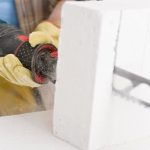With the hustle and bustle of modern life, finding the time to go to the gym or attend fitness classes can be a challenge. However, that shouldn’t stop you from improving your body and achieving your fitness goals. In fact, there are many benefits to working out at home. Not only does it allow you to exercise at your own pace and convenience, but it also eliminates any self-consciousness or intimidation that may come with exercising in public.
Improving your body at home has never been easier or more accessible. With advancements in technology and an abundance of online resources, you have all the tools you need right at your fingertips. Whether you’re looking to build muscle, improve endurance, increase flexibility, or simply shed those extra pounds, there are countless ways to achieve your desired results without ever leaving the comfort of your own home.
One major advantage of working out at home is the ability to set realistic and achievable fitness goals. Without feeling pressured by others or comparing yourself to those around you, you can focus solely on what works best for your body and what makes you feel good.
Additionally, by creating a workout routine specifically tailored to your needs and preferences, you can ensure that each exercise is performed correctly and effectively. This personalized approach not only maximizes results but also reduces the risk of injury.
Setting goals
Setting clear and attainable goals is crucial when it comes to improving your body at home. Without specific targets in mind, it can be easy to lose motivation and direction. Here are some steps to help you establish realistic and achievable fitness goals:
- Determine your starting point: Before setting any fitness goals, it is essential to assess your current physical condition. Take note of your weight, body measurements, and overall fitness level. This will provide a baseline from which you can track progress.
- Short-term vs. long-term goals: Break down your overall objective into smaller, manageable milestones. Short-term goals can be achieved within a few weeks or months, while long-term goals may take several months or even years to accomplish.
- Make them S.M.A.R.T.: Your fitness goals should be Specific, Measurable, Attainable, Relevant, and Time-bound (S.M.A.R.T). For example, instead of having a vague goal like “get fit,” make it specific by aiming to improve your cardiovascular endurance by running 5 kilometers without stopping within three months.
- Consider your lifestyle and circumstances: Be mindful of any limitations such as time constraints or existing medical conditions when setting your fitness goals. It’s important that they align with your everyday life to increase the likelihood of success.
Once you have established realistic and achievable fitness goals, it becomes easier to design an effective workout routine tailored towards reaching those specific objectives. Remember that progress takes time and patience, so stay committed and celebrate each milestone along the way.
Overall key points:
- Assess your current physical condition before setting any fitness goals.
- Break down long-term objectives into shorter milestones.
- Use the S.M.A.R.T goal format for establishing specific targets.
- Consider lifestyle factors when determining what is attainable.
- Stay committed and celebrate each achievement along the way.
By taking the time to set goals that are challenging yet achievable, you’ll be more motivated to stick to your fitness routine and improve your body at home. Keep in mind that regular reassessment and adjustment of goals may be necessary as you progress on your journey towards a healthier and fitter you.
Assessing your current fitness level
Assessing your current fitness level is an essential step in improving your body at home. By determining your strengths and weaknesses, you can develop a more targeted and effective workout routine that will help you achieve your fitness goals.
One way to assess your current fitness level is by performing a series of physical tests. These tests can include measuring your endurance, strength, flexibility, and cardiovascular fitness.
For example, you can time yourself on how long it takes to complete a certain number of push-ups or sit-ups, or measure the distance you can run within a specific time frame. This will give you a baseline measurement of where you are starting from and allow you to track improvements over time.
Another method for assessing your fitness level is by evaluating how certain exercises feel and challenging yourself with different movements. Pay attention to areas of strength and areas where you may struggle or feel discomfort. This self-awareness will help guide the creation of your workout routine, as it is important to focus on both improving weaker areas while also building upon existing strengths.
Once you have assessed your current fitness level and identified your strengths and weaknesses, you can then begin designing a workout routine that specifically targets these areas. It is important to create balance in your routine by incorporating exercises that address all aspects of fitness including strength training, cardiovascular exercises, flexibility and mobility work. By doing so, not only will you improve overall body composition but also prevent muscle imbalances that can lead to injury.
| Fitness Component | Assessment Methods |
|---|---|
| Endurance | Timed runs or walks |
| Strength | Max reps of push-ups or squats |
| Flexibility | Sit and reach test |
| Cardiovascular Fitness | Timed jump rope or burpees |
Assessing your current fitness level is an ongoing process. As you progress in your at-home workout routine, continue to reassess periodically to track improvements and make adjustments to your workouts as needed. Remember, everyone’s starting point is different, so don’t compare yourself to others. Instead, focus on your own progress and celebrate the small victories along the way.
Creating a workout routine
Designing a comprehensive at-home exercise program is crucial for achieving your fitness goals and improving your body at home. Whether you are a beginner or have some experience with exercise, creating a personalized workout routine will help you stay focused, motivated, and consistent in your fitness journey.
To design an effective at-home exercise program, start by identifying the specific areas of your body that you want to target. This could be overall strength and endurance, muscle building, weight loss, or even rehabilitation after an injury. Once you determine your goals, you can then choose exercises and activities that align with them.
When designing a workout routine, it is important to include a combination of strength training and cardiovascular exercises. Strength training helps build lean muscle mass and increase overall strength while cardiovascular exercises improve endurance and burn calories. Consider incorporating both bodyweight exercises and resistance training using household items such as water bottles or resistance bands.
To make sure your workout routine is well-rounded, don’t forget to include flexibility and mobility exercises. These types of movements can enhance joint mobility, improve posture, minimize the risk of injuries, and even aid in muscle recovery. Incorporate stretches for major muscle groups like calves, hamstrings, quadriceps, shoulders, chest, and back into your routine.
Strength training
Strength training is an essential component of improving your body at home. By implementing resistance exercises, you can build muscle and increase strength. Strength training not only enhances your physical appearance but also provides numerous health benefits.
When it comes to implementing resistance exercises at home, there are various options available. You can use items like dumbbells, resistance bands, or even household objects as makeshift weights. It’s important to start with lighter weights and gradually increase the intensity as your muscles get stronger.
Incorporating compound exercises into your workout routine is an effective way to engage multiple muscle groups simultaneously. Examples of compound exercises include squats, lunges, push-ups, and deadlifts. These exercises target major muscle groups and help improve overall strength and stability.
Furthermore, it’s crucial to focus on proper form and technique when performing strength training exercises at home. This ensures that you’re effectively targeting the intended muscles and reduces the risk of injury. If you’re new to strength training or unsure about correct form, it may be beneficial to seek guidance from a fitness professional or utilize online resources that provide instructional videos demonstrating proper technique.
To track your progress in strength training, consider keeping a workout journal where you record the weights used for each exercise and the number of repetitions performed. This allows you to gradually increase the weight or number of repetitions over time, leading to continuous improvement in your muscle strength.
Overall, incorporating strength training into your at-home fitness routine is a key step towards improving your body. With consistency and proper form, you can build lean muscle mass and enhance overall strength and functionality.
Cardiovascular exercises
Cardiovascular exercises are an essential component of any fitness routine, whether you’re at home or at the gym. These workouts not only help improve endurance and burn calories but also promote a healthy heart and strengthen the cardiovascular system. By incorporating effective cardio workouts into your at-home fitness routine, you can achieve your fitness goals and see a range of benefits for your overall well-being.
To get started with cardiovascular exercises at home, you have several options to choose from. Here are some popular and effective cardio workout ideas that you can easily incorporate into your routine:
- Jumping rope: This simple yet highly effective exercise requires only a jump rope and enough space for you to jump without any obstructions. It is a great way to get your heart rate up and burn calories quickly.
- High-intensity interval training (HIIT): HIIT involves alternating between short bursts of intense exercises and periods of rest or low-intensity activity. You can do bodyweight exercises like burpees, mountain climbers, jumping jacks, or squat jumps during the high-intensity intervals. This type of workout is time-efficient and helps boost your metabolism while increasing endurance.
- Dancing: Turn on some upbeat music and dance around in your living room. Not only will dancing get your heart rate up, but it’s also a fun way to burn calories while improving coordination and flexibility. You can follow along with dance tutorials online or create your own moves.
Incorporating these cardio workouts into your routine will not only help you improve endurance and burn calories but also add variety to your at-home exercise program. Remember to start slowly if you’re new to exercising or haven’t been active for a while. Gradually increase the intensity and duration of your cardio workouts as you build stamina and fitness levels.
Additionally, it’s important to listen to your body during cardio workouts at home. If you feel any pain or discomfort, modify the exercise or stop altogether if necessary. Always warm up before starting your cardio session and cool down afterward to prevent injury and promote recovery.
By incorporating effective cardiovascular exercises into your at-home fitness routine, you can improve endurance, burn calories, and reap the numerous health benefits associated with regular physical activity. Experiment with different workouts and find what works best for you to stay motivated and have fun while improving your body at home.
Flexibility and mobility exercises
Flexibility and mobility exercises play a crucial role in improving overall body performance and preventing injuries. By enhancing joint mobility and flexibility, individuals can achieve better range of motion, reduce muscle stiffness, and increase their ability to perform daily activities more efficiently. Incorporating these exercises into your at-home workout routine is essential for maintaining optimal physical health.
Benefits of Flexibility and Mobility Exercises
Flexibility refers to the ability of muscles and joints to move through their full range of motion, while mobility focuses on the capacity of joints themselves to move freely. Incorporating flexibility and mobility exercises into your routine can offer numerous benefits such as increased athletic performance, reduced risk of injuries, improved posture, enhanced coordination, and alleviation of muscle soreness.
Types of Flexibility and Mobility Exercises
There are various types of flexibility exercises that can be performed at home without any equipment. Some common examples include static stretching, which involves holding a stretch for a set period; dynamic stretching that involves moving body parts through a full range of motion; and proprioceptive neuromuscular facilitation (PNF) stretching that combines static stretches with muscle contractions for increased effectiveness.
Mobility exercises focus on increasing joint range of motion by targeting specific areas such as hips, shoulders, spine, or ankles. These exercises may include joint rotations, hip openers, spinal twists, shoulder mobility drills, and ankle mobilizations. It is important to choose exercises that target areas where you personally need improvement.
When to Perform Flexibility and Mobility Exercises
It is generally recommended to perform flexibility and mobility exercises both before and after your regular workout sessions. Prior to workouts, these exercises help warm up the muscles by increasing blood flow and preparing them for intense activity. After workouts, they aid in cooling down the body gradually while promoting muscle recovery.
In addition to pre – and post-workout routines, individuals can also incorporate flexibility and mobility exercises into their daily routine for added benefits. Stretching during breaks at work or while watching TV can help counteract the negative effects of prolonged sitting and maintain overall flexibility throughout the day.
Flexibility and mobility exercises are an integral part of any well-rounded home workout routine. By including these exercises in your fitness regimen, you’ll improve joint health, muscle function, and overall physical performance while reducing the risk of injuries. Take the time to properly warm up and cool down with these exercises, and you’ll see noticeable improvements in your body’s flexibility and mobility over time.
Nutrition and hydration tips
Fueling your body with the right nutrients and staying properly hydrated are essential components of any successful at-home fitness routine. Proper nutrition and hydration not only provide the energy needed for workouts but also support overall health and recovery. Here are some key tips to help you optimize your nutrition and hydration for optimal results.
- Eat a balanced diet: Aim to consume a variety of nutrient-rich foods, including fruits, vegetables, lean proteins, whole grains, and healthy fats. These foods provide the necessary vitamins, minerals, and antioxidants to support your fitness goals.
- Prioritize protein: Protein is crucial for muscle repair and growth. Include lean sources of protein such as chicken, fish, tofu, eggs, or legumes in each meal.
- Stay hydrated: Drink plenty of water throughout the day to maintain proper hydration levels. Water helps regulate body temperature, lubricate joints, transport nutrients, and remove waste products.
- Time your meals: Consider timing your meals around your workouts to optimize performance and recovery. Eating a small snack or meal containing carbohydrates and protein about 1-2 hours before exercise can provide energy and prevent fatigue.
- Fuel up post-workout: After exercising, replenish your glycogen stores by consuming a combination of carbohydrates and protein within 30-60 minutes. This could be a protein shake, Greek yogurt with fruit, or a turkey sandwich on whole-grain bread.
- Monitor portion sizes: Be mindful of portion sizes to ensure you’re consuming adequate calories without overeating. A food scale or measuring cups can help you accurately track portions.
- Limit processed foods: Minimize the intake of highly processed foods that are high in unhealthy fats, added sugars, and sodium. Opt for whole foods whenever possible.
- Listen to your body: Pay attention to hunger cues and eat when you’re truly hungry. It’s important to nourish your body appropriately while avoiding restrictive eating patterns that can hinder your progress.
In addition to proper nutrition, it’s important to stay properly hydrated before, during, and after your workouts. Dehydration can lead to fatigue, muscle cramps, and impaired performance. Follow these hydration tips:
- Drink water before, during, and after exercise.
- Consider sports drinks if you’re engaged in intense or prolonged workouts to replenish electrolytes lost through sweat.
- Aim to drink half of your body weight (in pounds) in ounces of water each day.
- Monitor the color of your urine – pale yellow is a good indicator of proper hydration.
By fueling your body with the right nutrients and staying properly hydrated, you’ll optimize your at-home fitness results and support overall health and well-being. Remember that nutrition is individualized, so it may be beneficial to consult with a registered dietitian for personalized guidance based on your specific needs and goals.
| Nutrition Tips | Hydration Tips |
|---|---|
| Eat a balanced diet including fruits, vegetables, lean proteins, whole grains, and healthy fats. | Drink water before, during, and after exercise. |
| Prioritize protein for muscle repair and growth. Include sources like chicken,fish,tofu,eggs or legumes in each meal. | Consider sports drinks for intense or prolonged workouts to replenish electrolytes. |
| Time meals around workout times for optimal performance /Recovery. | Aim to drink half of your body weight (in pounds) in ounces of water each day. |
| Fuel up post-workout with a combination of carbohydrates and protein within 30-60 minutes | Monitor the color of your urine – pale yellow is a good indicator of proper hydration. |
Utilizing home workout equipment
Utilizing Home Workout Equipment: Recommendations and Tips for Using Common Household Items or Affordable Fitness Equipment
When it comes to improving your body at home, you don’t necessarily need access to a fancy gym or expensive workout equipment. In fact, you can achieve great results by utilizing common household items or investing in affordable fitness equipment. This section will provide recommendations and tips on how to make the most of what you have at home.
Common Household Items
There are plenty of everyday items found in your own home that can double as exercise equipment. For example, a sturdy chair can be used for step-ups, tricep dips, or even elevated push-ups. Similarly, a towel can be used as an exercise band substitute for resistance training exercises like bicep curls or lateral raises. Another versatile item is a set of filled water bottles, which can act as dumbbells for exercises such as shoulder presses or squats.
Affordable Fitness Equipment
If you prefer using actual fitness equipment for your at-home workouts, there are many affordable options available. Resistance bands are cost-effective and come in different levels of resistance to suit your needs. They can be used for various strength training exercises targeting different muscle groups.
Another popular choice is a stability ball, which helps improve core stability and balance during workouts. Additionally, adjustable dumbbells are worth considering if you want to invest in long-term fitness equipment that allows you to increase the weight as you progress.
Tips for Using Home Workout Equipment
No matter what type of equipment you choose to use at home, there are several tips to keep in mind for optimal results and safety:
- Start with proper form: Before adding any weight or resistance, make sure you have mastered the correct form and technique for each exercise.
- Gradually increase intensity: If you’re using weights or resistance bands, start with lighter resistance and gradually increase as you build strength.
- Stay consistent: Just like any other workout routine, consistency is key. Make a schedule and stick to it for maximum benefits.
- Mix it up: Don’t be afraid to switch between different equipment or exercise variations to keep your workouts challenging and prevent plateauing.
- Listen to your body: Pay attention to any pain or discomfort during exercise and adjust accordingly. It’s better to take it slow and avoid injuries.
By utilizing common household items or affordable fitness equipment, you can create an effective at-home workout routine that targets all major muscle groups and helps you reach your fitness goals. Remember, staying motivated and consistent with your workouts is just as important as the equipment you use.
Next Section: Staying Motivated: Strategies to maintain consistency and motivation throughout your at-home fitness journey.
Staying motivated
Goal Setting
One of the key strategies to staying motivated during your at-home fitness journey is to set clear and achievable goals. Without a specific target in mind, it can be easy to lose motivation and become discouraged. Take some time to reflect on what you hope to achieve through your fitness routine. Whether it’s improving overall strength, losing weight, or increasing endurance, having a goal will help you stay focused and motivated.
Once you have established your main goal, break it down into smaller, more manageable milestones. These milestones can serve as checkpoints along the way and provide a sense of accomplishment as you progress. Remember to make these goals realistic and specific.
For example, instead of setting a vague goal such as “get stronger,” aim for something like “increase my squat by 10 pounds within six weeks.” This way, you can track your progress more effectively and enjoy the satisfaction of achieving each milestone.
Create a Support System
Another effective strategy for maintaining motivation is to establish a support system. Share your fitness goals with family members, friends, or even join online communities dedicated to at-home workouts. Having someone to hold you accountable or simply cheer you on can greatly enhance your motivation levels.
Consider finding an accountability partner who shares similar goals and interests. This person can check in with you regularly to discuss progress, offer tips and advice, and celebrate achievements together. Additionally, joining virtual workout classes or finding an online fitness coach can provide structure and external encouragement during your at-home fitness journey.
Keep Things Interesting
To avoid monotony and keep yourself engaged in your at-home workouts, it’s important to vary your routine regularly. Trying new exercises or activities not only prevents boredom but also challenges different muscle groups and helps prevent plateaus in performance.
Experiment with different types of workouts such as dance routines, yoga flows, high-intensity interval training (HIIT), or bodyweight exercises. You can find a wide variety of workout videos available online that cater to different fitness levels and preferences. By constantly introducing new exercises and routines into your at-home workouts, you can stay motivated and excited about your fitness journey.
Tracking progress
Tracking progress is an essential part of any fitness journey, including when you are working out at home. Monitoring and measuring improvements in strength, endurance, and overall body composition can help you stay motivated, track your success, and make necessary adjustments to your workout routine. Here are some methods you can use to effectively track your progress at home.
One of the simplest ways to track your progress is by keeping a workout journal or log. Write down the exercises you performed, the number of sets and repetitions, and any additional notes such as the weight used or how you felt during the workout. This will allow you to see your progression over time and help identify areas that need improvement.
Another method is measuring your strength and endurance through specific exercises or workouts. For example, if you are doing push-ups, keep track of how many repetitions you can do in one minute or how long it takes for fatigue to set in. Over time, as you get stronger and more fit, these numbers should increase.
In addition to measuring strength and endurance, tracking changes in body composition is important for those who have specific goals related to weight loss or muscle gain. You can use tools such as a scale or body fat calipers to measure changes in weight and body fat percentage regularly. Keep in mind that body weight alone is not always an accurate indicator of progress since muscle weighs more than fat.
Lastly, consider taking regular progress photos. Sometimes it can be difficult to notice small changes in our bodies on a daily basis. By taking monthly photos from different angles, you will have visual evidence of your progress that can be very motivating.
Remember that everyone’s fitness journey is unique, so it’s important not to compare yourself too much with others. Focus on your own progress and celebrate each milestone along the way. By consistently tracking your progress using these methods, you will stay motivated and inspired throughout your at-home fitness journey.
Safety precautions
When it comes to improving your body at home, safety should always be a top priority. Without the guidance of a professional trainer or instructor, it’s essential to be aware of important guidelines and take necessary precautions to prevent injuries. Here are some key safety precautions to consider when designing your at-home workout routine.
First and foremost, it’s crucial to warm up before starting any exercise. A proper warm-up increases blood flow to your muscles, gradually raises your heart rate, and loosens joints, reducing the risk of strains or pulls. Incorporate dynamic stretches such as arm circles, leg swings, and hip rotations into your warm-up routine.
Next, make sure to use proper form during exercises. Incorrect form not only diminishes the effectiveness of the exercise but also increases the risk of injury. Take time to educate yourself on the correct technique for each exercise you plan to perform and focus on maintaining that form throughout your workout.
Another crucial precaution is listening to your body’s signals. If you experience pain or discomfort while exercising, it is important to stop immediately and assess what could be causing it. Pushing through pain can lead to further injury and hinder your progress in the long run. Remember that it’s better to take a break or modify an exercise than risking injury.
Lastly, don’t forget about the importance of rest days in your routine. Your body needs time to recover and rebuild after intense workouts; otherwise, you increase the risk of overuse injuries such as muscle strains or stress fractures. Incorporate rest days into your schedule and listen to your body when it signals that it needs extra recovery time.
By following these safety precautions, you can ensure a safe and injury-free workout routine at home. Remember that taking care of yourself should always come first in any fitness journey.
Conclusion
In conclusion, improving your body at home is not only convenient but also has numerous benefits. By setting realistic and achievable fitness goals, assessing your current fitness level, and creating a personalized workout routine, you can effectively enhance your overall health and well-being. Incorporating strength training exercises will help you build improve-hand-muscles-at-home/” target=”_blank” rel=”follow noopener”>muscle and increase strength, while cardiovascular workouts will improve endurance and burn calories. Flexibility and mobility exercises are essential for enhancing joint mobility and preventing injuries.
Additionally, paying attention to nutrition and hydration is crucial for fueling your body with the right nutrients and maintaining optimal performance. Utilizing common household items or affordable fitness equipment can make your at-home workouts more effective. It is also important to stay motivated throughout your fitness journey by implementing various strategies such as finding a workout buddy or setting small milestones.
Tracking progress is another vital aspect of improving your body at home. By monitoring improvements in strength, endurance, and overall body composition, you can stay motivated and see tangible results. Lastly, it is essential to prioritize safety during your home workouts by following important guidelines and precautions to prevent injuries.
Remember, regular physical activity is key to leading a healthy lifestyle. So whether it’s through at-home workouts or other forms of exercise, find what works best for you and make it a priority. With dedication, consistency, and the tips provided in this article, you have the power to improve your body from the comfort of your own home. So don’t wait any longer – start today.
Frequently Asked Questions
How can I make my body stronger at home?
Making your body stronger at home can be achieved through consistent exercise and proper nutrition. Incorporating bodyweight exercises such as push-ups, squats, lunges, and planks can help improve overall strength. Additionally, using resistance bands or dumbbells can provide added resistance for more challenging workouts.
It is also important to maintain a well-balanced diet that includes lean proteins, fruits, vegetables, whole grains, and healthy fats to support muscle growth and recovery. Setting specific fitness goals and tracking progress can help you stay motivated and continue to make your body stronger.
How can I improve my body fast?
Improving your body fast requires a combination of intense workouts and a strategic approach to nutrition. High-intensity interval training (HIIT) can be an effective way to boost your fitness level quickly. These workouts typically involve short bursts of intense exercise followed by brief rest periods.
HIIT helps promote cardiovascular fitness while also burning calories and building muscle. In addition to regular exercise, ensuring that you are consuming enough protein is essential for muscle repair and growth. However, it is important to note that achieving significant changes in your body composition takes time, consistency, and patience.
Can I get a good body at home?
Yes, it is possible to achieve a good body at home with dedication and the right approach. While access to gym equipment may provide more variety in training options, there are plenty of effective exercises that can be done without any equipment at all or with minimal equipment like resistance bands or dumbbells.
Along with regular strength training exercises like squats and push-ups, incorporating cardiovascular exercises such as running or jumping jacks will help burn calories and improve overall fitness levels. Consistency is key – establishing a routine that encompasses both exercise and healthy eating habits will contribute to achieving a strong and fit body regardless of where you choose to work out.

I’m thrilled to have you here as a part of the Remodeling Top community. This is where my journey as an architect and remodeling enthusiast intersects with your passion for transforming houses into dream homes.





